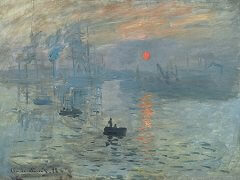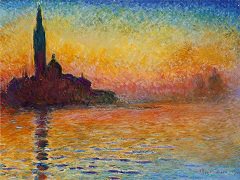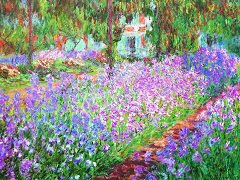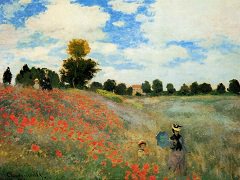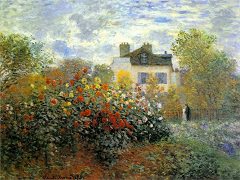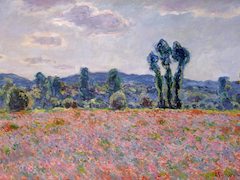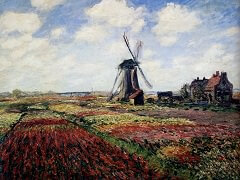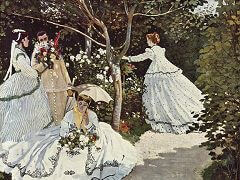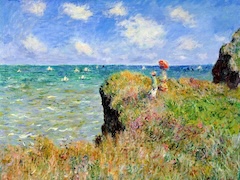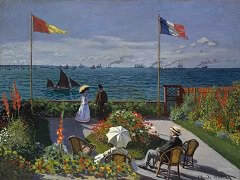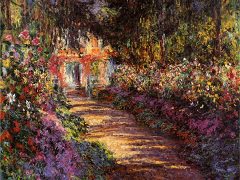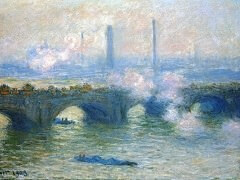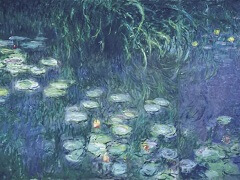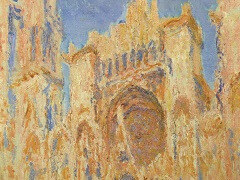The Windmill at Amsterdam, 1871, by Claude Monet
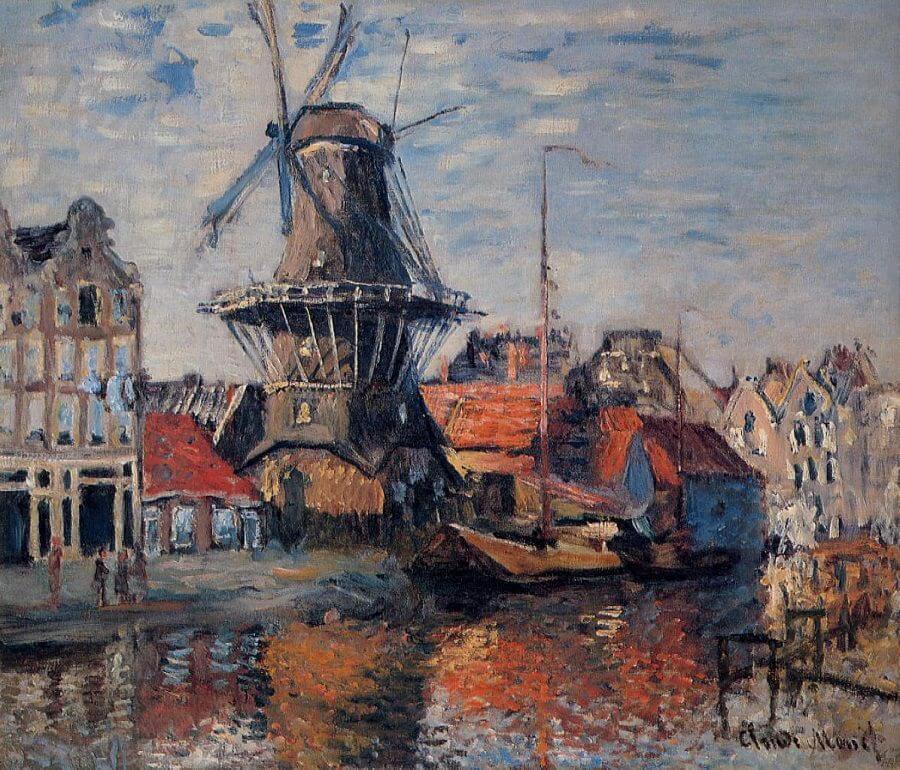
Claude Monet had been exiled to England during the Franco-Prussian War. During his stay, he painted about 20 views of the town and its environs. In a letter to his friend Camille Pissarro, who was living in England at the time, Monet wrote:
There are the most amusing things everywhere. Houses of every colour, hundreds of windmills and enchanting boats, extremely friendly Dutchmen who almost all speak French... I have not had time to visit the museums, I wish to work first of all and I'll treat myself to that later."
The Windmill at Amsterdam depicts the old Zaandam mill that sat along the Onbekende Canal in Amsterdam. The mill was used for extracting yellow, red and blue dyes from coloured woods, with the development of chemical dyes the mill went bankrupt, and in 1876 it was torn down, Monet's vibrant use of colours in the work would seem to reference the dyes from the historic use of the building, the colours appearing to seep out into the canal.
Monet's vivid use of clear color and crystal sky later has a deep impact on Van Gogh, which painted his Le Moulin de Blute-Fin, the same scene the year that he arrived in Paris from Anterwerp.

